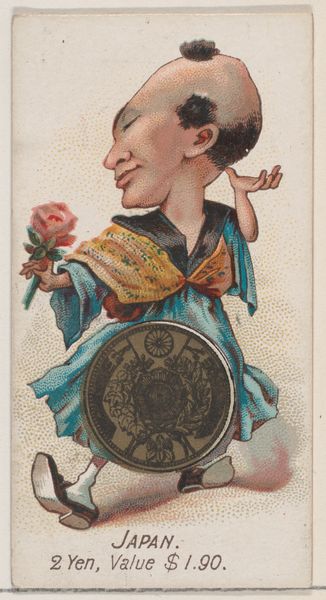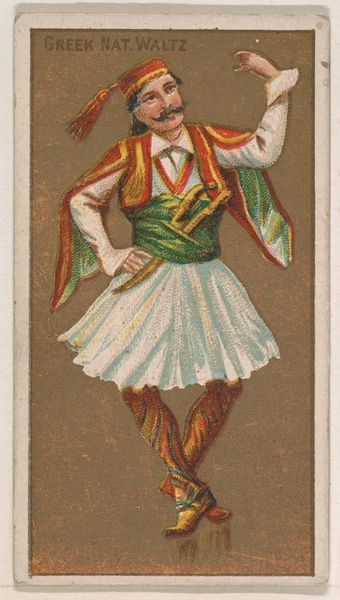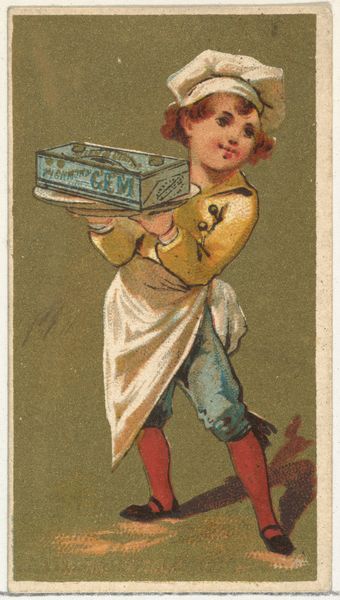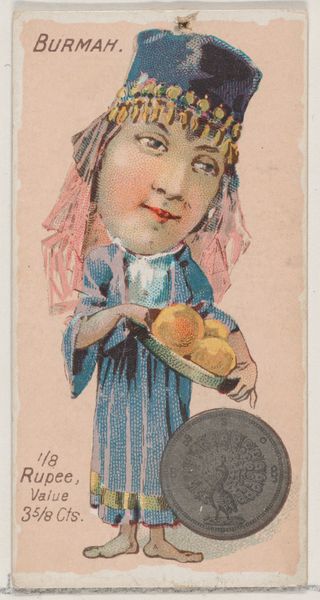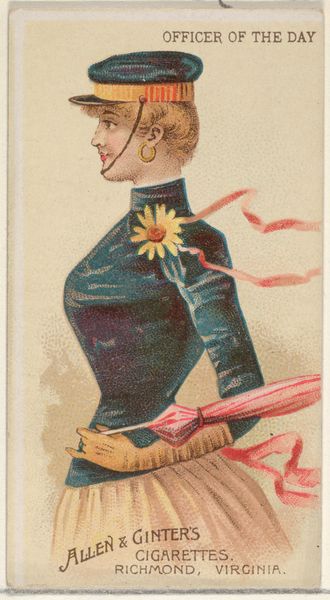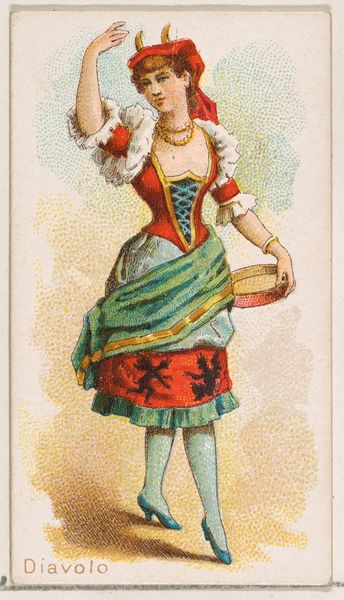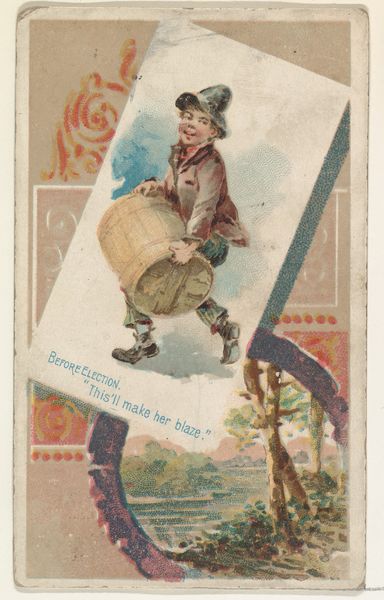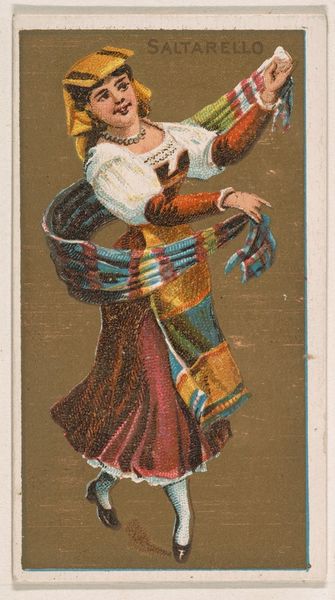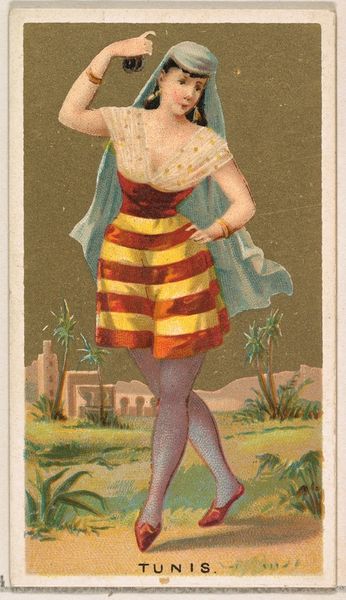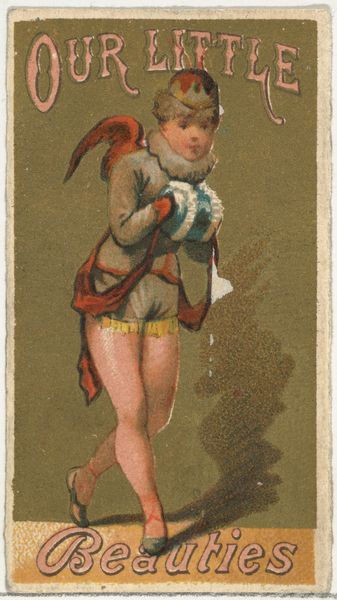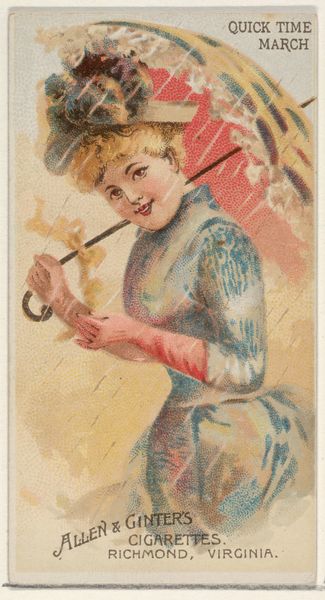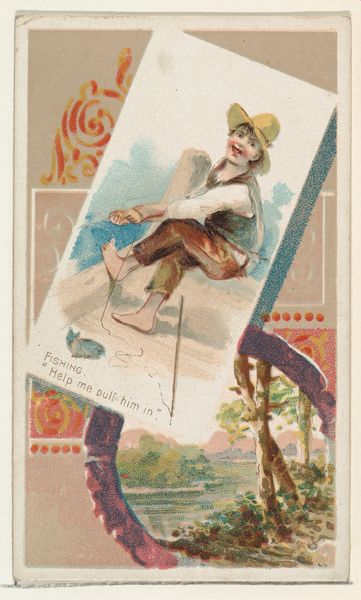
Caricatured Korean, 1 Shot, from the series Coins of All Nations (N72, variation 2) for Duke brand cigarettes 1889
0:00
0:00
drawing, coloured-pencil, print
#
drawing
#
coloured-pencil
# print
#
caricature
#
asian-art
#
caricature
#
figuration
#
coloured pencil
#
orientalism
Dimensions: Sheet: 2 3/4 x 1 1/2 in. (7 x 3.8 cm)
Copyright: Public Domain
Curator: We are looking at a color print titled "Caricatured Korean, 1 Shot" from the series Coins of All Nations, created around 1889. It was made for Duke brand cigarettes. Editor: The overall composition strikes me as quite theatrical. The figure, rendered with exaggerated features, seems to pose against an almost flattened background. The interplay of colors, while limited, adds a certain vibrancy. Curator: It’s important to understand that pieces like this functioned as promotional material, circulated widely through tobacco products. They offered simplified, often stereotyped, images of other cultures, intended for mass consumption. Editor: Precisely. And within that flattened plane you note, there's the suggestion of dimensionality through shading—see the subtle curves defining the coin and clothing—which contradicts the caricature’s intent to render a simplified view. There's a fascinating tension at play. Curator: Consider also the labor involved: from the initial design to the print production and its insertion into cigarette packs. This image was essentially a commodity, consumed alongside tobacco, both products of industrial manufacturing. Editor: The subject is presented holding a large coin, an attempt perhaps, at symbolic representation of wealth or value associated with a country or people. And yet, it does so through distortion. Look at the disproportionately large ears, the sharp, almost aggressive eyes. Curator: Yes, the "coin" reinforces this. Cigarette companies aimed to legitimize their products by associating them with exoticism. But through cheap, mass-produced images they reinforce the orientalist dynamic and promote imperial fantasies. Editor: A complex layering of image, symbol and manufacture creating its own statement beyond simple exoticism. Its form alone provides such an insight, doesn’t it? Curator: Ultimately, the trade card embodies a significant convergence of artistic expression and economic motivation, reflecting a specific period in history, where these cultural caricatures found a place in our lives through industrial means. Editor: A moment frozen in time—one captured with the tools available during that era of artistic expression, filtered through a particular lens, isn’t it?
Comments
No comments
Be the first to comment and join the conversation on the ultimate creative platform.
